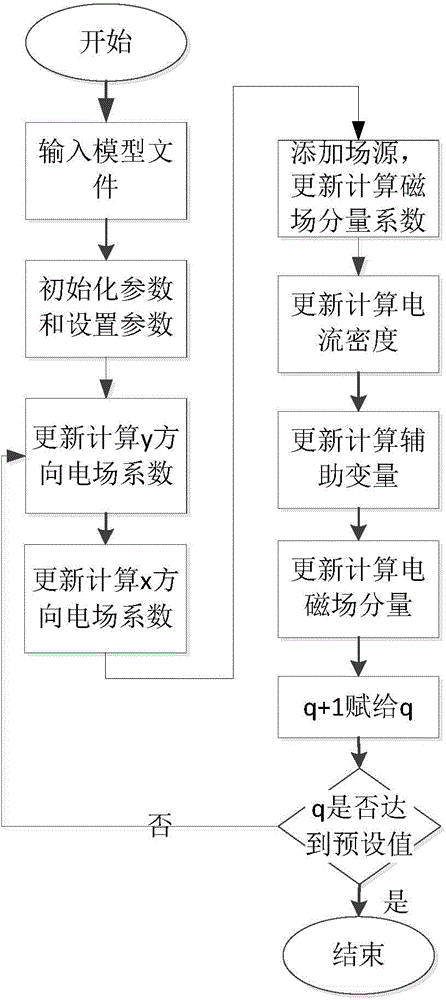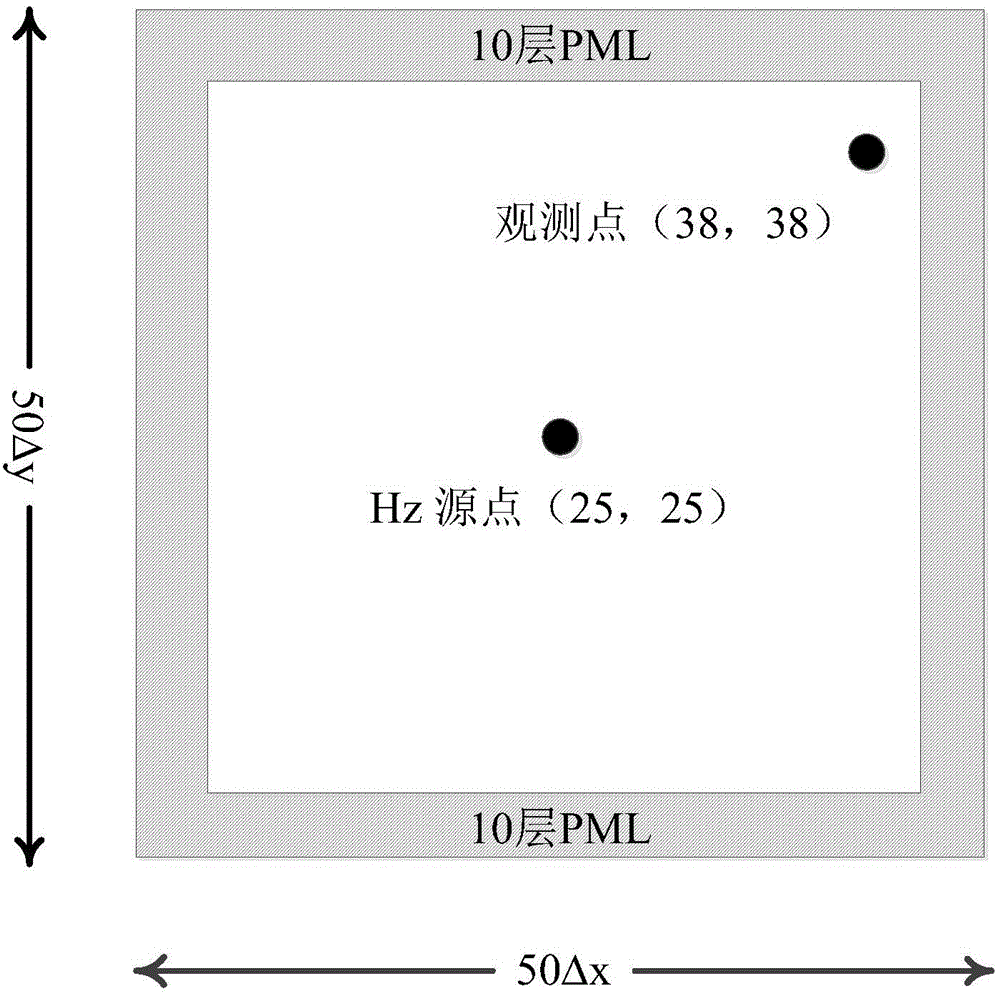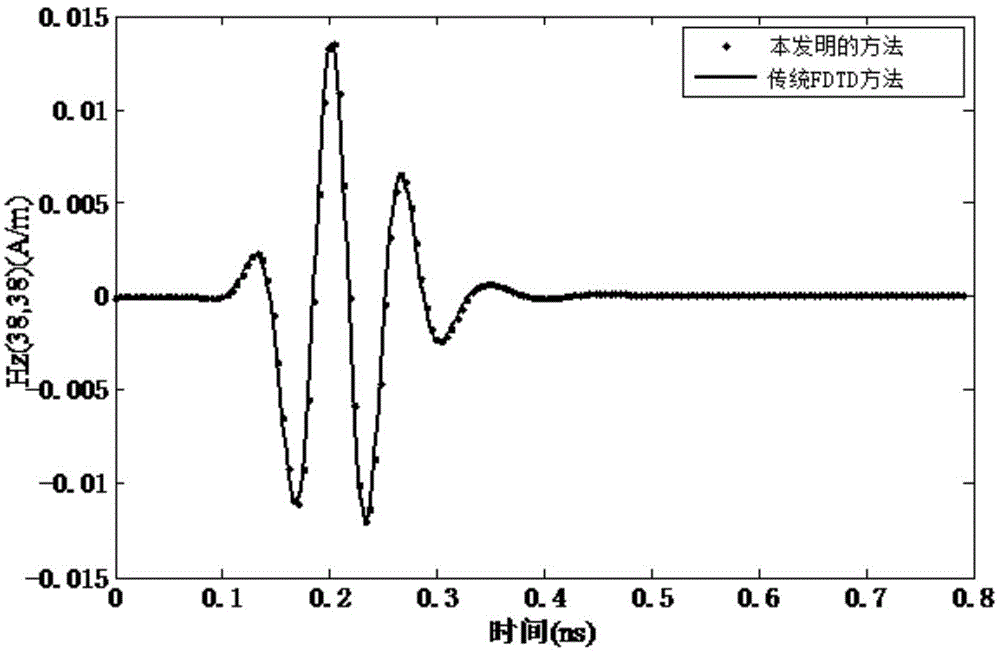Method for realizing perfectly matched layer by using current density convolution in plasma
A completely matching layer and plasma technology, applied in the field of computational electromagnetics, can solve the problems of large memory consumption, unsatisfactory absorption effect, poor absorption effect, etc.
- Summary
- Abstract
- Description
- Claims
- Application Information
AI Technical Summary
Problems solved by technology
Method used
Image
Examples
Embodiment Construction
[0057] The present invention will be described in detail below in conjunction with the accompanying drawings and specific embodiments.
[0058] A method of realizing the current density convolution complete matching layer in the plasma of the present invention, the principle is as follows: first derive Maxwell’s equations in the complex extended coordinate system satisfied by the electromagnetic field in the plasma, and then use a new high-speed and effective current The weighted Laguerre polynomial finite-difference time-domain method (JEC-WLP-FDTD) of density convolution derives the update equations of the electromagnetic field component coefficients and current densities in the entire calculation area, and finally uses the first equation of equation (15) to solve the observation The electromagnetic field component at the point.
[0059] When solving the updating equations satisfied by the propagation of electromagnetic waves in the plasma, it is first necessary to derive th...
PUM
 Login to View More
Login to View More Abstract
Description
Claims
Application Information
 Login to View More
Login to View More - R&D
- Intellectual Property
- Life Sciences
- Materials
- Tech Scout
- Unparalleled Data Quality
- Higher Quality Content
- 60% Fewer Hallucinations
Browse by: Latest US Patents, China's latest patents, Technical Efficacy Thesaurus, Application Domain, Technology Topic, Popular Technical Reports.
© 2025 PatSnap. All rights reserved.Legal|Privacy policy|Modern Slavery Act Transparency Statement|Sitemap|About US| Contact US: help@patsnap.com



